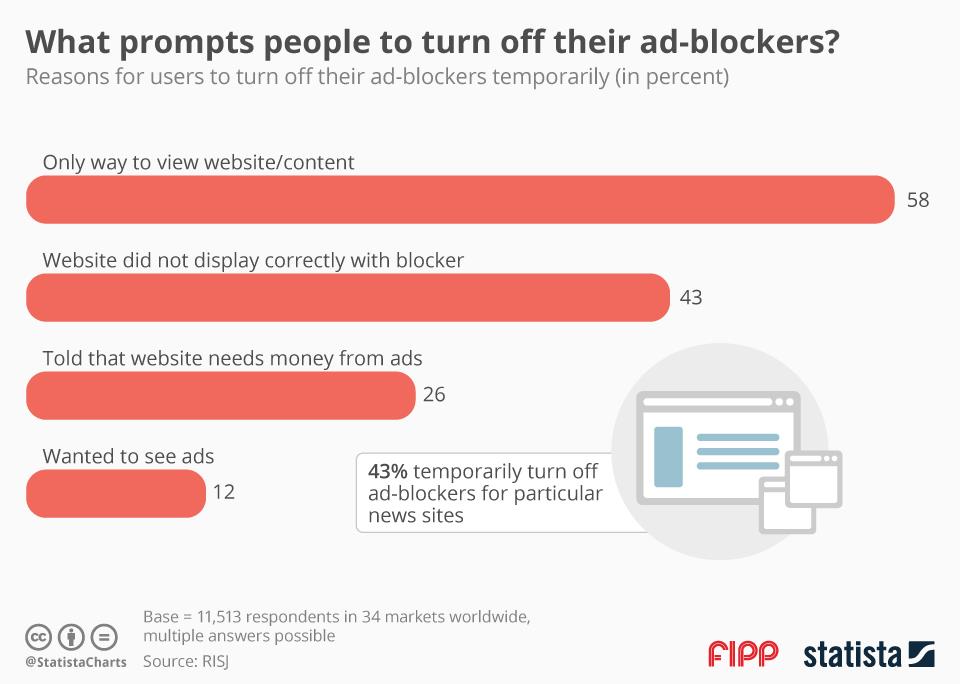Chart of the week: What prompts people to turn off their ad-blockers?
Fifty-eight per cent of respondents in a Reuters Institute for the Study of Journalism (RISJ) poll said that they turned off their ad-blocker, at least temporarily, if there was no other way to view the website or content. But explaining to users that the ad money is needed to fund the website can get publishers places too. Twenty-six per cent of users said they switched off the blocker when notified the website depended on the ad funds.
The good news is that there are ways to get users to comply with the rules of indirect funding. However, this doesn’t mean that users will start loving ads because they were in some way coerced (or kindly asked) to turn off their ad-blockers. Then again, 43 per cent of respondents said they switched off their blockers for particular news sites, meaning that news media could profit from investing in a relationship with users. It seems, some users surf with an ad-shield by default, but are willing to let down their guard if the targeted website is trusted.

Download the chart here.
Source: Statista
More like this
Chart of the week: ‘Media and entertainment’ is the second most launched app category
Chart of the week: Steady increase in digital ad spend targeting kids
Chart of the week: Mobile first for the news industry
Chart of the week: Who favours the press?
Chart of the week: Feeling tracked and the counter-measures against ads









